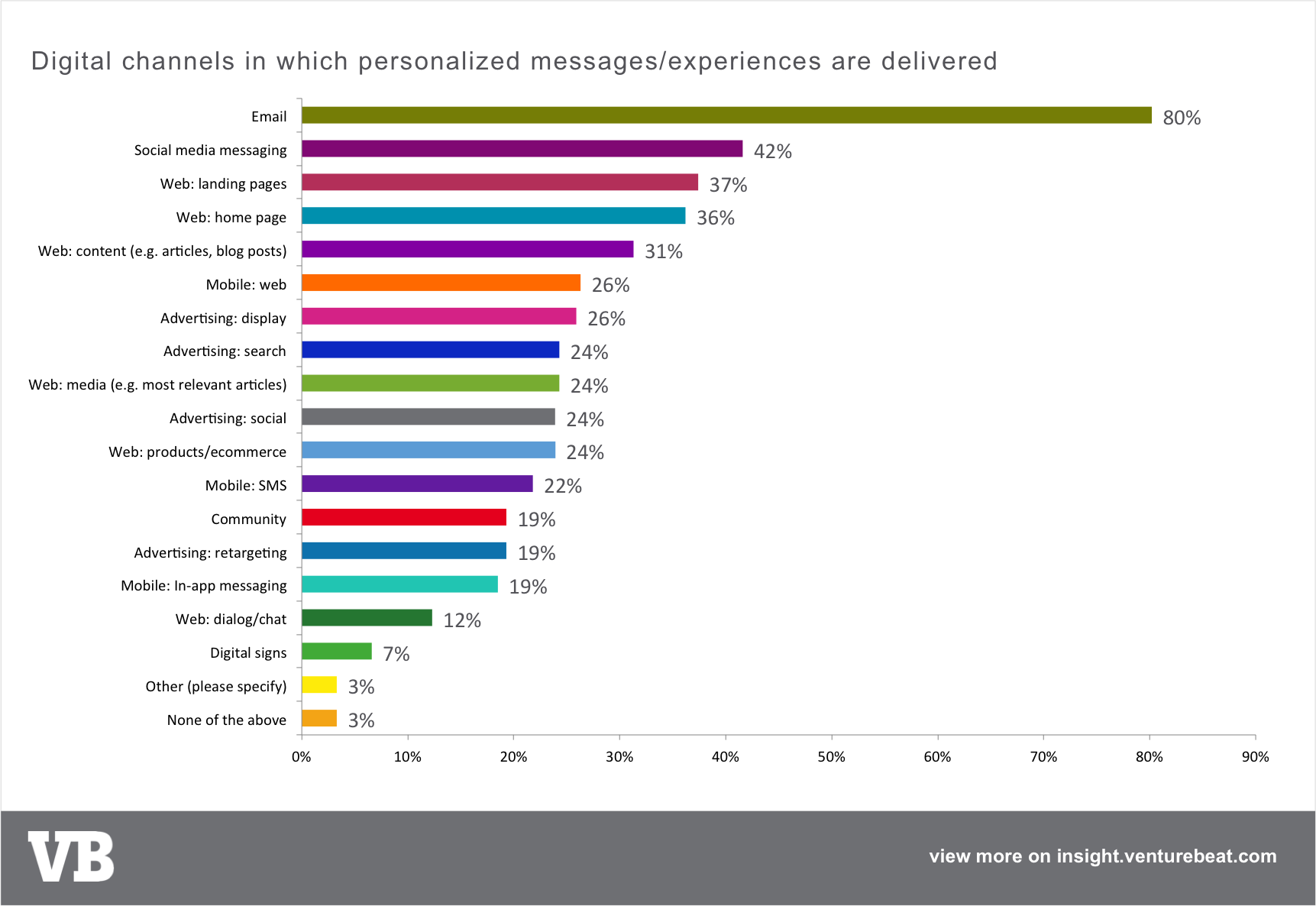Want smarter insights in your inbox? Sign up for our weekly newsletters to get only what matters to enterprise AI, data, and security leaders. Subscribe Now
Web personalization is different from other marketing channels, according to a new study by Andrew Jones for VB Insight.
In Jones’ most recent study, he explains that the majority of your web visitors — 95-98 percent for B2C and 57-90 percent for B2B — are anonymous. That means you can’t rely on the kind of rich profile data you might collect, and make use of, in your customer relationship management (CRM) or email marketing solutions. But all is not lost.
“Browsing is a very active process,” Jones said in his study. “Each mouse hover or click is a signal, and even factors like time spent on a page correlate to interest (or perhaps disinterest if it’s very short). In email, by contrast, there’s very little signal beyond open-rate and click-through.”
But there’s an issue right now.
While web personalization is characterized by active, real-time data — including important signals such as purchase intent and current interests — the fact is that most marketers aren’t making use of it on their B2B or B2C websites.
In one of Jones’ previous studies of personalization, he showed that web personalization is not commonly employed. About a third of marketers are achieving limited personalization on either a landing page or the home page, and fewer than a quarter are personalizing content or products.
That lack of personalization is an issue if you sell to “digital natives” — those late Gen Y and Gen Z types who have grown up using computers, smartphones, and other digital devices. It turns out, according to my own research, that 77.5 percent of respondents in this age group want you to give them a truly personalized experience, both on your website and within messages.
This is no surprise. As we found in our Digital Pitchforks report — a study of how people complain to brands on social media — social media natives (SoMes) are a new breed:
SoMe natives were born and raised on social media. They’re young, and social media is their native environment, making them skilled in its use. For a SoMe native, collaborative creation is practically the reason the Internet exists. Social platforms such as Instagram, Vine, Twitter, Tumblr, YouTube, Reddit, Pinterest, and more allow SoMe natives to create, consume, remix, and republish content in ways not seen before. SoMe natives expect your social presence to be as immediate and engaging as they enjoy with their friends and connections.
Of course, the needs of one type of consumer alone can’t drive the personalization agenda. But it is worth pointing out that — in all our combined research on personalization — almost every age of consumer either wants a more relevant experience or is happier when personalized delivery increases the value they get from the brands they interact with.
I’ll be digging into this topic in my keynote on day one of NexterdayNorth in Helsinki. If you can make it to the event, I’ll be taking questions on the day. If you can’t make it, send your questions to me via Twitter. In order for me to see them, please mention me (I’m @TheRealSJR on Twitter) and use the hashtag #Nexterday. The best questions will be asked on stage during the event, and I’ll reply to all others on Twitter during the two-day “anti-seminar.”
The results, and returns we’re seeing from personalized content in our studies, can’t be argued with, so it’s time to collectively raise the bar. Join me in person on November 9-10, 2015 in Helsinki, or join me online to find out more.



